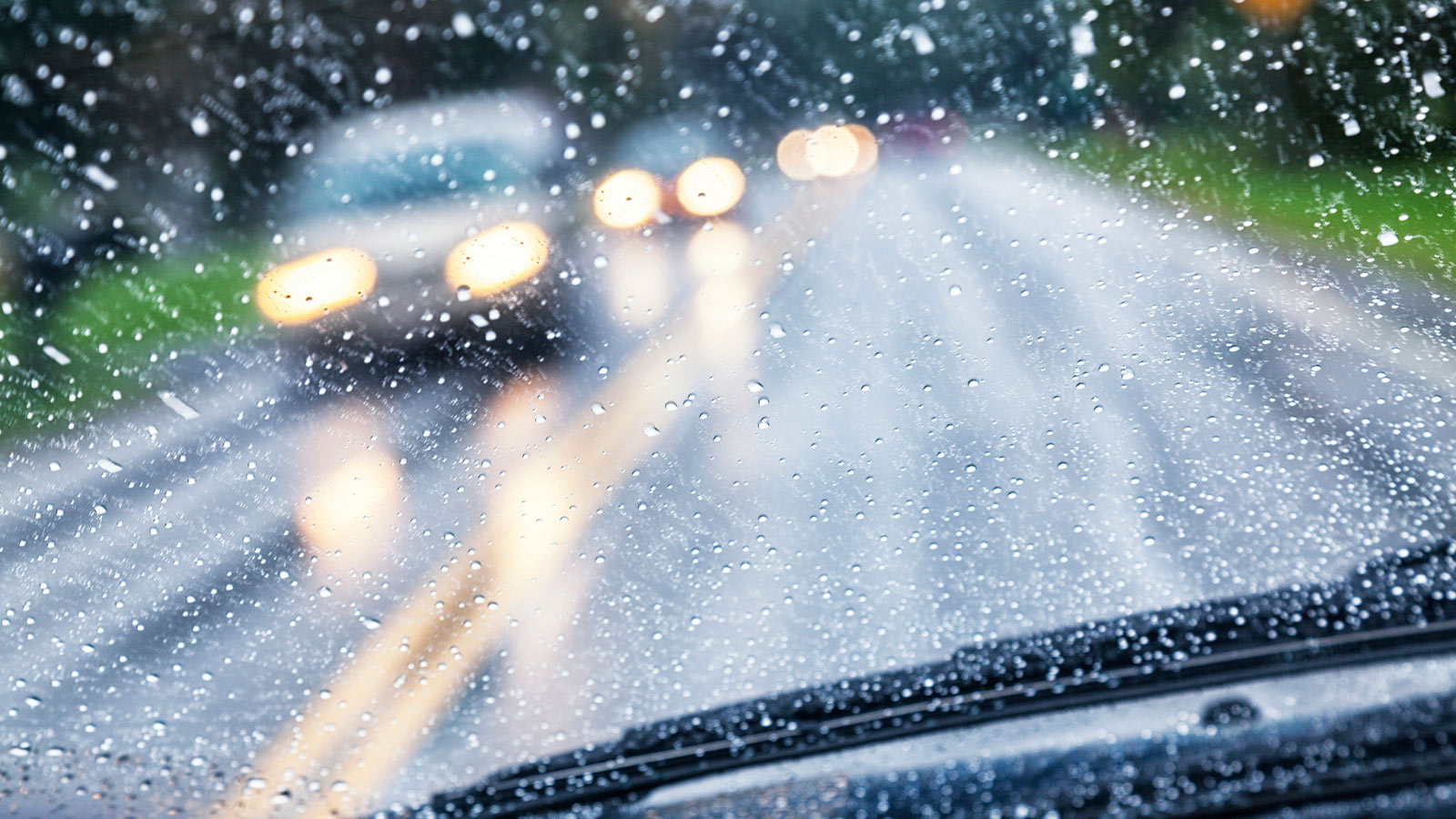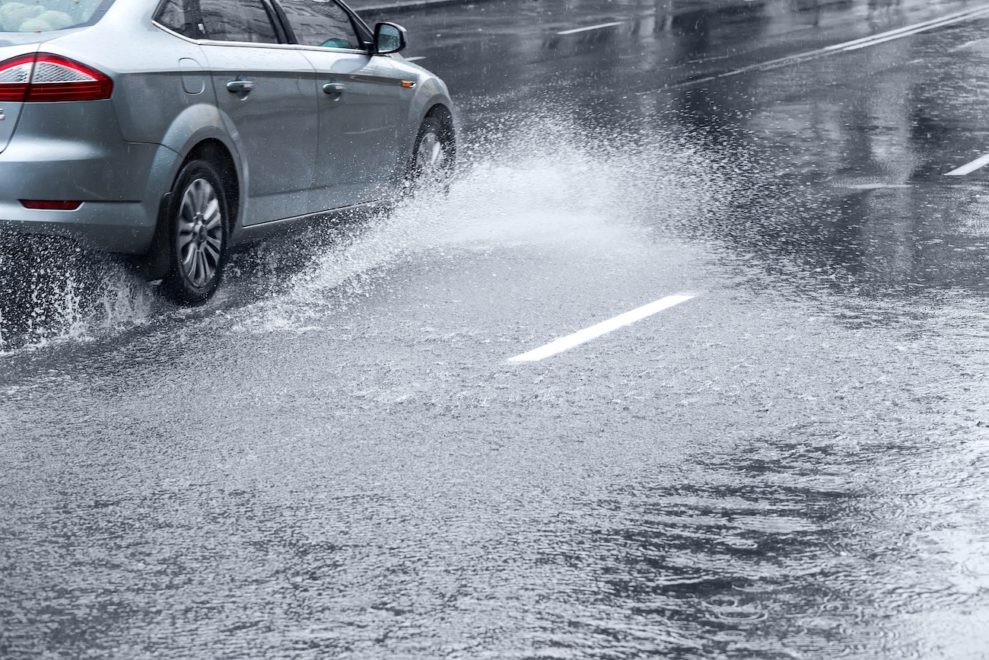Rain plays a prominent role in crash statistics, and motorists are required to modify their driving accordingly. Excess speed is often the culprit in rain-related accidents.
While most of us consider rain a bit of a nuisance when we’re trying to get wherever it is that we’re going, we rarely focus on exactly how dangerous rain is in relation to driving. The rain actually plays a significant role in many car accident statistics, which makes proceeding with caution paramount. If you or someone you love has suffered an injury as a result of another driver’s failure to exercise the necessary caution when driving in the rain in LA, it’s time to reach out for the skilled legal guidance of an experienced Los Angeles car accident attorney.
The Statistics
In some of their most current findings, the National Highway Traffic Safety Administration (NHTSA) and the U.S. Department of Transportation (DOT) share the following statistics in relation to the wet roads that are often caused by rain:
- In a recent year, driver speed played a role in 19 percent of traffic fatalities on dry roads, while it played a role in 22 percent of traffic fatalities on wet roads.
- Every year, there are an average of 5,891,000 traffic accidents, and about 21 percent of these are related to weather, including the wet pavement caused by rain.
- The vast majority of weather-related traffic accidents happen on wet pavement and while rain is falling.
The statistics regarding wet pavement generated by a recent DOT study spanning 10 years include the following:
- There were 860,286 wet pavement accidents, which account for 15 percent of all traffic accidents and 70 percent of all weather-related traffic accidents in this country.
- There were 324,394 wet pavement accidents that caused injuries, which account for 15 percent of all traffic accident injuries and 78 percent of all weather-related traffic accident injuries in the U.S.
- There were 4,050 wet pavement fatalities, which account for 12 percent of all traffic fatalities and 76 percent of all weather-related traffic fatalities in this country.
The risk when it comes to rain and wet pavement it causes is all too real, and reducing one’s speed is the only safe response.

Why Driving in the Rain Is So Dangerous
Even a small amount of moisture on the road can decrease how well our vehicles perform on them. Oil naturally builds up on our roads over time – as a result of the traffic that travels on them. Heavy rains can help wash this oil away. Light rain, however, coats our roads – allowing these oils to rise to the surface and make driving incredibly precarious in the process, which is why even light to moderate rain can interfere with tire traction. The risk factors, however, do not end here.
Consider the following additional dangers:
- Rain can mask risks like potholes and debris on the road.
- Rain can significantly decrease visibility.
- Rain conditions can make it far more difficult to keep our windshields and safety mirrors clear.
- Rain increases stopping distances, which makes leaving more space between vehicles critical.
- Rain can blur the telltale signs of danger on the road ahead, which makes them more difficult to detect and safely react to.
- Rain can interfere with your car’s ability to brake safely.
- Rain diffuses the light emitted by your car’s headlights, rendering them less effective.
- Standing water can not only conceal a danger on the road but can also lift a vehicle off the road – rendering it impossible to navigate safely.
- Windshield wipers can have a very hard time keeping up with heavy rain, which further decreases visibility.
- High winds often accompany rainfall, which can serve as a double whammy as far as dangerous driving goes.
Rain and Hydroplaning
We all remember learning about hydroplaning in driver’s ed, but if you’ve never experienced it, you may not have any idea what it’s actually about. Hydroplaning is an especially dangerous risk factor for driving in the rain, and it amounts to a vehicle’s tires losing all contact with the road, which makes the car’s driver a passenger in their own vehicle. For however long the car hydroplanes, the driver has no real control over the vehicle’s trajectory because all available traction with the road is lost.
How It Works
The basics of hydroplaning include:
- The grooves in our tires quickly pump water away from each surface that comes in contact with the road.
- It’s estimated that the average new tire can pump out about eight gallons of water per second, but when it can’t handle the water quickly enough, the surface that is in contact with the road can lift up and begin to ride, instead, on the water’s surface.
- If you’ve ever felt a momentary lightening of control while driving through a puddle that was deeper than you anticipated, you’ve experienced a moment of hydroplaning.
- When it comes to reducing the risk of hydroplaning, the most important factor is the depth of tread on your tires.
Reducing Your Risk of Hydroplaning
There are three very important steps you can take to help ensure that you don’t fall victim to dangerous hydroplaning, and they include:
- Ensuring that your tires are always roadworthy
- Maintaining proper pressure in all four tires
- Decreasing your speed in direct response to the weather, including in response to rainfall
Every motorist is responsible for making safe driving choices, including slowing down in direct relation to the condition of the road and to the effects that rain has on it
Rain: Staying Safe Out There
You recognize that rain poses special risk factors. Fortunately, however, there are things that you can do to help you remain better prepared to address these risks safely.
Allow for Additional Time behind the Wheel
Be Careful When You Brake
Braking is a serious concern on wet roads, which makes leaving considerably more distance between you and forward traffic critical. To begin, wet roads are slippery roads, which makes braking quickly a dicey proposition. When you’re driving in the rain, it’s important to allow yourself the time and space on the road you need to slow down or stop in a controlled manner – attempting to do so suddenly can prove disastrous. It’s also important to note that wet brakes are less effective than dry brakes.
Skip the Cruise Control
Cruise control is intended for ideal conditions in which you’re less likely to need to adjust your speed or make snap safety decisions. While you should always be at the top of your game when you’re behind the wheel, cruise control allows you to maintain a steady speed while you safely maneuver over the open road – where unpredictable traffic is far less likely to impede you. Whenever there is a risk factor like bad weather involved, however, cruise control should be off the table. Using your cruise control in rainy conditions leaves you far more vulnerable to hydroplaning.
Turn on Your Headlights
Even if it’s raining just a bit, turning on your headlights provides you with a better view of the road ahead and helps to ensure that you’re more visible to other drivers. Using your high beams in the rain, however, will only reflect the light back at you – reducing visibility that much more. California requires drivers to have their lights on when visibility is reduced, and a good rule of thumb on this count is turning your lights on anytime you need to use your wipers.
Steer Clear of Standing Water
The risks associated with standing water are significant, and the best practice is to avoid it whenever possible. In those situations that afford you no other option, however, it’s important to slow your vehicle down as smoothly as possible and to proceed directly through the standing water as carefully as possible. Standing water greatly increases the risk of hydroplaning, and it can also mean trouble for your vehicle’s brakes and engine.
Remember that the Risk Is Greatest After Long Dry Spells
California sees its share of dry spells, and it’s important to factor in dry spells when it comes to driving in rainy conditions. The longer the stretch of dry weather, the more likely it is that there will be a considerable buildup of oils on the road – and the more likely they are to become slippery in the event of rain.
Reschedule
If you’ve planned a car trip that you later realize coincides with heavy rains, rescheduling to a day when you’re likely to have better driving conditions is a great option. While doing so isn’t always a possibility, it’s something to consider when rescheduling is doable.
The Other Driver
While you take every precaution in the face of rain and wet roads, not every motorist does, and these drivers are often at fault when dangerous driving accidents ensue. While excess speed is a primary concern when it comes to driving in the rain, the risks associated with every form of driver negligence are enhanced, and they include:
- Failing to follow the traffic laws
- Driving aggressively
- Driving under the influence of alcohol, drugs, or exhaustion
- Distracted driving
Your Legal Damages
If another driver’s negligence leaves you injured in a wet-weather accident, the legal damages – or losses – that you face can be immense, including property damage to your vehicle.
Your Medical Costs
The medical bills you experience as a result of a car accident can not only be exceptionally high but can also be ongoing. The impact of a car accident can leave you with serious injuries that are vulnerable to secondary healthcare issues as well as complications. Having a solid understanding of your projected health outcome and your medical needs along the way is essential to obtaining just compensation that affords you the best opportunity to recover fully.
Your Lost Wages
The injuries you sustain in a car accident can keep you away from work for a significant amount of time, which can lead to significant losses in terms of your earnings. The matter becomes that much more serious if your ability to earn over time is affected or if your overall career suffers a downturn.
Your Pain and Suffering
Although you can’t see or clearly quantify the physical and emotional pain and suffering you endure, it doesn’t alter the fact that it is very real. In fact, these physical and emotional consequences can significantly hinder your recovery and can lead to lasting complications.
Your seasoned car accident attorney will gather and compile the evidence necessary not only to demonstrate the other driver’s negligence in your car accident claim but also to support the accounting of your losses – in their entirety.


